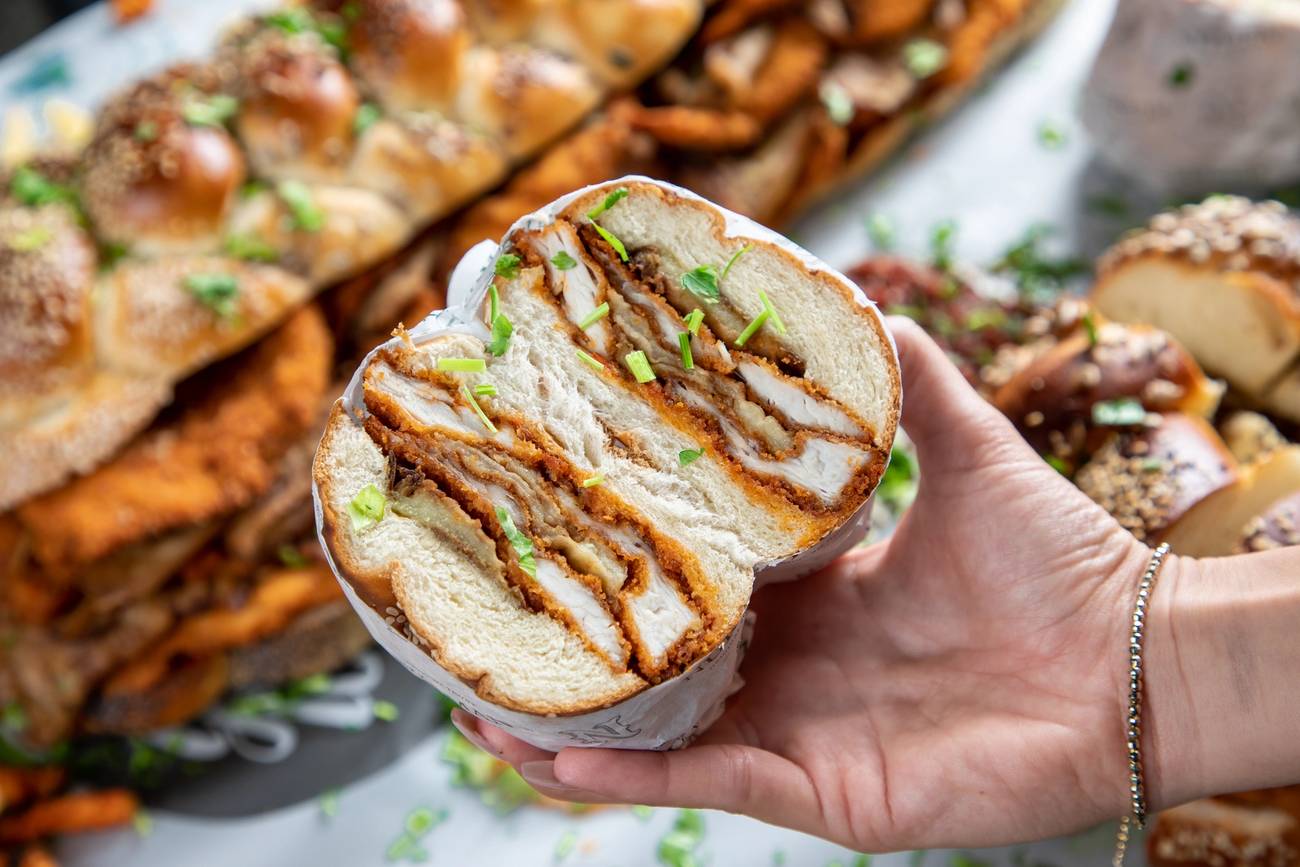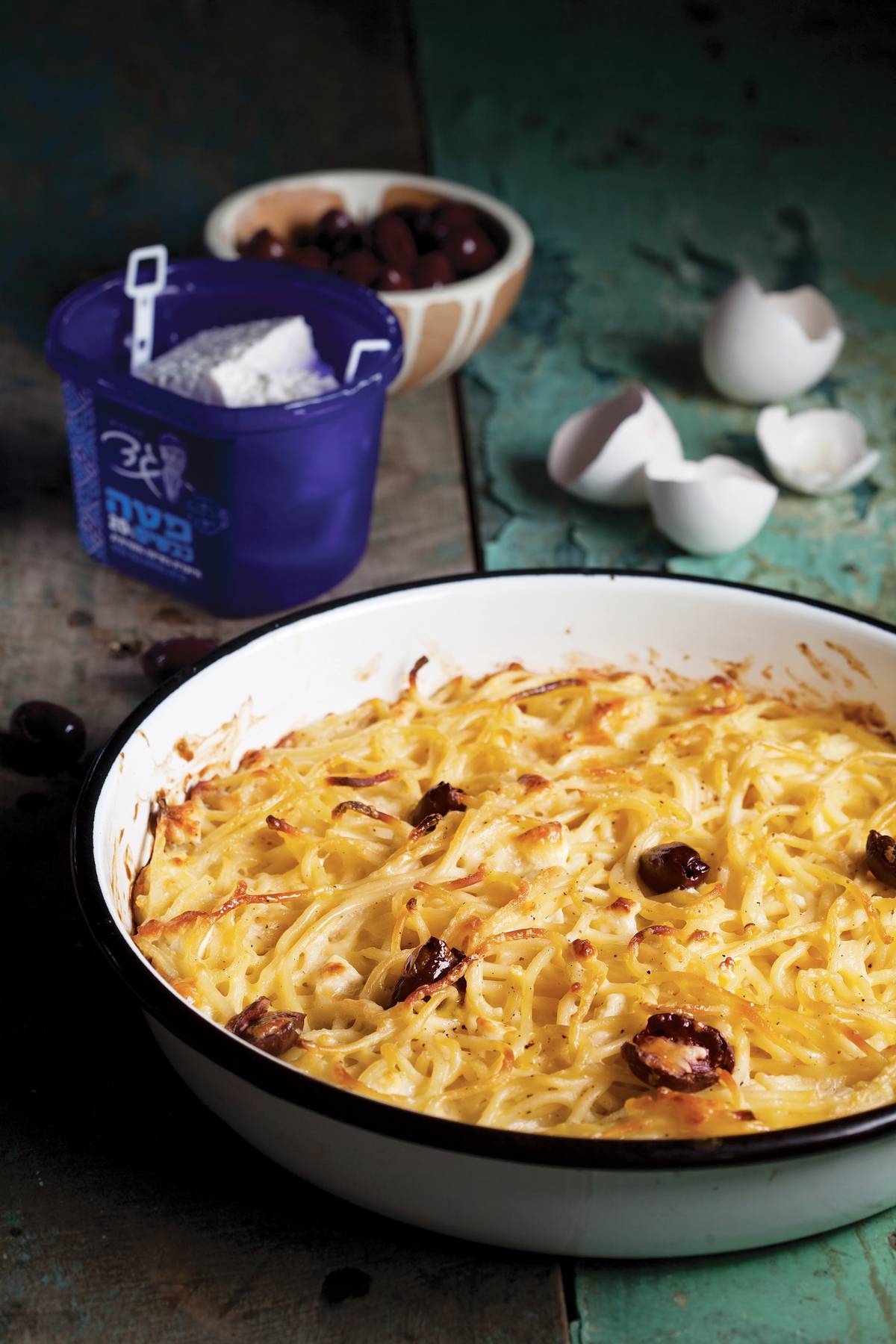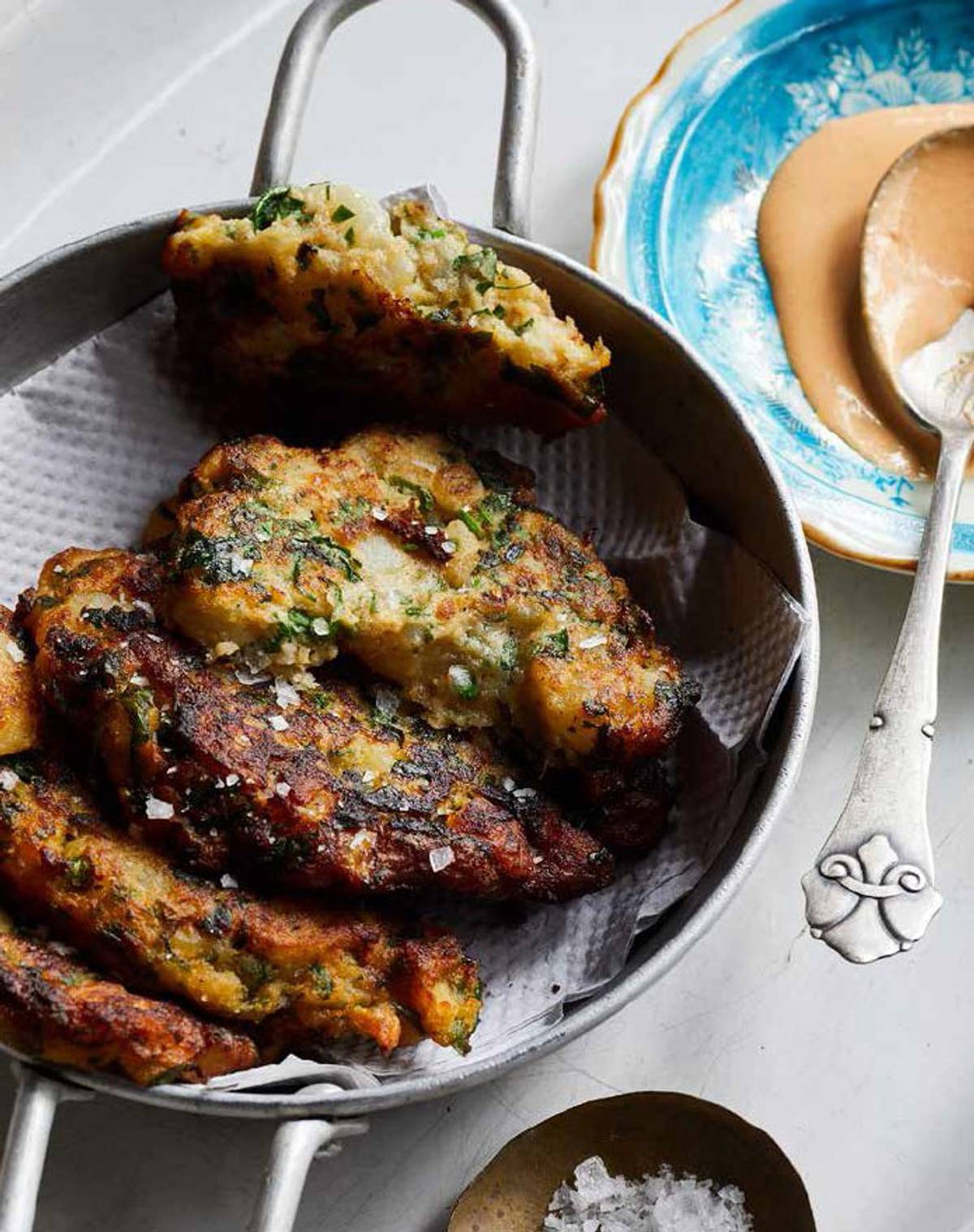The Challenge of Friday Lunch
You’re busy preparing food for Shabbat, and in the midst of that frenzy, you have to make a pre-Shabbat lunch. Fortunately, there are plenty of customs and recipes to make this ordinary meal memorable.



How can you produce your best meals when you can’t turn on a stove or an oven, let alone chop, fry, or bake? This fundamental paradox of Shabbat cooking has shaped Jewish cuisine and given birth to some of its most distinctive dishes. Getting ready for Shabbat is not only a gastronomic challenge, but a logistical one. For an observant homemaker, Friday is a frantic race against the clock, especially now, when the sun sets early and all house chores must be dealt with before 4 p.m. And smack in the middle of all this frenzy, there is another task that needs to be tackled: Friday lunch.
In Israel, as in most Mediterranean countries, lunch is the biggest meal of the day, so people are usually quite hungry at lunchtime. Curiously, even around this nuisance of a meal, there are a host of customs and customary dishes. Naturally, they are less regulated and more esoteric than those associated with Shabbat and holiday cooking—but that’s all the more reason to explore them.
My first encounter with a Friday lunch dish was pasta kabbalat Shabbat (literally, Shabbat greeting pasta). Hailing from Jewish Bulgarian cuisine, it is basically a Balkan version of mac and cheese, but instead of cheddar and milk, there are kashakaval and feta. Both cheeses are used to stuff bourekas , stars of the Bulgarian Shabbat brunch that are prepared ahead of time on Friday—but the leftovers are mixed with olives, pasta, and eggs and sent to the oven for that day’s lunch. Scrumptious and a breeze to make, this looks like a logical solution for this rushed meal.

Logic and culinary traditions don’t always go hand in hand, however. Take Syrian Ijeh, Iraqi aruk, or Tunisian bentash: All three are pan-fried patties, made with eggs, herbs, and, in the Iraqi and Tunisian versions, mashed potatoes. Shaping and frying individual patties is pretty labor intensive; nevertheless all three are associated with Friday lunches in their respective communities.
Potatoes keep popping up in additional Friday lunch dishes—from the Ashkenazi potato kugel to Syrian hamoud. The latter is a fragrant, brothlike soup made with potatoes, celery, chard, and lots of lemon juice (hamoud means sour in Arabic). Other carb-based dishes are equally popular: rice with white beans (Turkish and Syrian), noodles with butter, sugar, and cocoa or poppy seed (Hungarian), or butter couscous (Moroccan), to name a few. Because all these dishes are quite filling, they are not served with bread, which might be the reason they have become associated with the pre-Shabbat meal in the first place. Rabbi Joe Schwartz explained: “According to Halacha, a meal—as opposed to a snack—entails the eating of bread (which demands that one wash and bless before and after). Avoiding bread on Friday lunch makes it less important, and in this way enhances the status of the Friday night dinner, the first of the three Shabbat meals.” This concept of playing down the pre-Shabbat meal is also reflected in the fact that most dishes for Friday lunch are meatless or prepared with the most humble cuts, like poultry offal, wings, or necks.
To help me discover more about Friday lunch traditions, I reached out to Tehilah Setton, an Israeli food writer and founder of Foodos—an online community of more than 30,000 observant foodies (dos is a local moniker for religious Jews). Setton posted a query on the Foodos Facebook wall, which sparked a lively discussion and generated hundreds of comments.
All of the traditional dishes I’ve described, and many others, came up in the online discussion, but usually as something that the responders remember from their parents’ or grandparents’ households. In the young, busy (often two-career) families that constitute the backbone of the Foodos community, Friday lunch is a challenge that’s usually resolved with takeout (for the lucky ones, the takeout comes from the grandmother’s kitchen), a pizza, a plate of hummus, or a sandwich. One sandwich that caught my eye was baguette with hummus and turkey pastrami—if this is not Israeli cooking in a nutshell, I don’t know what is. But the most iconic pre-Shabbat sandwich is challah with schnitzel. This newish and very Instagram-able trend was born about three years ago in Nurman, an upscale shawarma joint in downtown Tel Aviv, and it is closely linked to the pre-Shabbat vibe.

“In my parents’ house we called it ‘thieves’ sandwich,’” said Aviel Hanya, one of the owners of Nurman, whose parents hail from Tunisia and Morocco. “Imagine a Friday afternoon in a typical North African household. The house is quiet and squeaky clean and a small army of pots and trays filled with delicious food is sitting on the kitchen counter. For lunch, my mom served us a plate of samples from Shabbat pots, but small ones, so we are properly hungry for the main event. And hungry we are! When my mom heads for the shower I quickly sneak into the kitchen, tear up a couple of thick chunks of challah, slather it with matbucha, fried eggplants, and a couple of schnitzels. I don’t dare to touch other stuff, like the spicy fish stew I love so much—my mom will know right away that someone has dug into the pot. But schnitzels are piled high—no one will notice if a couple are missing.”
Decades later, Hanya recreated the thieves’ sandwich at a family meal he cooked for his kitchen staff. “It was Friday, the restaurant was closed for cleaning and maintenance, the pantry and the fridge were almost empty. So I sliced a challah I have bought for Shabbat, spread it with matbucha my sister has brought over, and threw a few schnitzels in the hot oil. Everybody loved it and we decided then and there to add it to the menu.” The challah-schnitzel-matbucha-eggplant combo quickly became the most popular item at Nurman. When the pandemic hit and restaurants closed, the takeout sandwich became an even bigger hit (apparently it travels well) and according to Hanya kept the place afloat during those trying months. Nowadays it is widely imitated by many fast-food restaurants and is popular at home as well.
The Shabbat sampler plate that Hanya mentioned is yet another Friday lunch tradition, and a very convenient one at that. No extra cooking is required, all you need to do is put together a plate of tastings from whatever you made for Shabbat. And the best part: By having an early taste of Shabbat food you are actually doing a mitzvah—or at the very least following an ancient tradition. “The Halacha gives two reasons for the custom,” explained Schwartz. “The first is rather pragmatic: to make sure the food is to the liking of the husband in advance, so as to avoid strife in the family on Shabbat itself. The second is more mystical: to fulfill what is written in the prayer recited at Musaf of Shabbat: ‘Those who observe [the Sabbath] with delight will partake of honor everlasting, and those who taste of it will merit life.’”
All this is good and well, as long as you don’t overdo it. As it says in the Shulchan Aruch: “One is commanded not to eat a special festive meal on Friday so as to enter Shabbat with an appetite, and after the 9th hour on Friday, one is forbidden from eating a proper meal at all.”
Janna Gur is a Tel Aviv-based writer and journalist. She is the author of The Book of New Israeli Food, Jewish Soul Food from Minsk and Marrakesh, and Shuk (with Einat Admony).